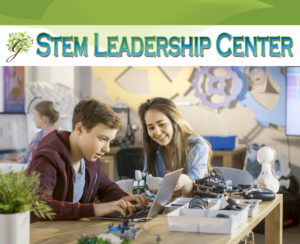 The below comments are written for parents and grandparents of children over ten.
The below comments are written for parents and grandparents of children over ten.
The funerals at Newtown have come to an end, the days of mourning have (for those of us not directly affected by the tragedy) given way to Christmas celebrations. Group prayers have turned to other concerns. And yet the shadow of evil lingers and will glide into view when the holidays are over and children head back to school. As parents we are dealing with our own fears, our own versions of what if. My challenge to you, during those rare moments of family conversation over the holiday break, is to open a dialog with the special young person in your life and ask what is going on in their thoughts and imaginations.
Do they feel empowered to make the world less violent?
I was a youth minister in a church in Carnegie years before Columbine. I overheard student comments about being afraid to go to school and afraid of walking to a friend’s house at night. I listened and heard an almost universal frustration at having their fears dismissed. What I put in their hands was the tools of research and the skills of advocacy. They developed a questionnaire asking for specific “quantitative” information (have you ever taken a weapon to school) and stories or “qualitative” information (describe an incident where you were afraid of violence). They went to principals and teachers for permission to administer the questions to various classes in the two high schools they represented and had over 200 students fill them out. They presented their findings to a very small group of parents and school board members (and a member of the press). They were invited back to present to a panel of school and community officials. Their research not only included stories and statistics that highlighted the reality of violence in their everyday school lives, it also included specific recommendations for ways to address and minimize the problem (an anonymous tip line and peer mediation training were among the recommendations). All of their recommendations were adopted. What tools do your children need to face their fears of violence?
Are they thinking critically about what can changes will be effective?
I have received, in the last few days, invitations to sign four petitions. Encourage your child to research (with the techniques taught in forensic debate and mock trial competitions) the merits of each and advocate for or against participation in the petition.
- Reenact the Assault Weapons Ban and make it law
- Increase the availability of mental health services now
- Protect grieving families from politically charged demonstrations at funerals
- Walmart: Stop selling assault rifles in stores
Are they prepared to deal with friends responses?
Your own child may be doing just fine and yet have friends that are responding with an overwhelming sense of grief, fear or rage. Do your child’s friends live with a violent sibling or parent? What are the safety plans? Are you included in these? Are your children aware of mental health resources and how to access them? Do they know when it is important to involve police? I am always amazed (and often shake my head in disbelief) when I ask my son “what would you do?” Emergencies need rehearsal so that clear decisions are reviewed at a time before our brain ceases to think clearly.
Do they know how to mourn and how to comfort those who mourn?
Empathy and a respect for life is taught through culture and family. Was a moment taken in your home, in your place of worship, or in your school (middle and high school) to mourn the loss of life in Newtown? What types of rituals were your children encouraged to participate in? Did they make a card, say a prayer, pause for a moment of silence, plant a memorial tree?
How do they deal with rage?
Oh, Mr. Rogers, you were so wise! Consider rewatching What do you do with the mad that you feel? with a child in your life and asking how they are dealing with rage. Let them know it is okay to seek help if they feel overwhelmed, out of control, or unable to rein it in. Help them have a plan when they feel that way.
How can they lead?
Calista Frederick-Jaskiewicz, a 16 year old in Wexford, PA, has spearheaded Operation Sandy Hook: Peace to You, an effort to fold and send origami peace cranes to Newtown. Calista said the idea originated with Sebastian Tabares of Denver, the youngest among leaders of the seven nationwide Origami Salami chapters. Origami Salami is a student organization promoting the ancient art of folding paper as a project based introduction to Science, Technology, Engineering and Math. Children from Italy and China have joined the effort to show support to the Sandy Hook elementary school and community by making these Japanese symbols of peace, love and hope. Your child can follow Calista on her Facebook or website. Folders are asked to mail cranes before Jan. 1 to: Origami Salami, PO Box 1324, Wexford, PA, USA, 15090-1324.
What vision do they have for school and community?
The longing for peace echoes through every spiritual classic in human history. An awaited messiah is called upon with the titles of Wonderful Counselor and Prince of Peace. Divine grace is poured forth in Christian scriptures to bless those who are peacemakers. Church communities, including many Catholic dioceses around the globe, establish peace and justice commissions who look to right the underlying economic and political injustices at the heart of conflict. The Roman Catholic Church celebrates a World Day of Peace feast day on January 1 inspired by Pope John XXIII encyclical Pacem in Terris. Truth and Reconciliation commissions have worked to heal communities broken by war and racial violence. The psychological specialty of conflict resolution breaks open the complexity of culture, family, genetics, and experience to attempt to pave roads leading to peace. Working to understand and support these initiatives fuels our imaginations to envision a home, school and community that seeks to promote an active peace of economic prosperity and human flourishing. Is your child’s vision expansive enough? Can they envision and work for peace?
May the holiday break bring the opportunity to ask and wonder together. I close with the Decalogue (Ten Commandments) of Assisi for Peace written in 2002 at a gathering of religious leaders from around the globe in Assisi, Italy.
Decalogue of Assisi for Peace
1. We commit ourselves to proclaiming our firm conviction that violence and terrorism are incompatible with the authentic spirit of religion, and, as we condemn every recourse to violence and war in the name of God or of religion, we commit ourselves to doing everything possible to eliminate the root causes of terrorism.
2. We commit ourselves to educating people to mutual respect and esteem, in order to help bring about a peaceful and fraternal coexistence between people of different ethnic groups, cultures and religions.
3. We commit ourselves to fostering the culture of dialogue, so that there will be an increase of understanding and mutual trust between individuals and among peoples, for these are the premise of authentic peace.
4. We commit ourselves to defending the right of everyone to live a decent life in accordance with their own cultural identity, and to form freely a family of his own.
5. We commit ourselves to frank and patient dialogue, refusing to consider our differences as an insurmountable barrier, but recognizing instead that to encounter the diversity of others can become an opportunity for greater reciprocal understanding.
6. We commit ourselves to forgiving one another for past and present errors and prejudices, and to supporting one another in a common effort both to overcome selfishness and arrogance, hatred and violence, and to learn from the past that peace without justice is no true peace.
7. We commit ourselves to taking the side of the poor and the helpless, to speaking out for those who have no voice and to working effectively to change these situations, out of the conviction that no one can be happy alone.
8. We commit ourselves to taking up the cry of those who refuse to be resigned to violence and evil, and we are desire to make every effort possible to offer the men and women of our time real hope for justice and peace.
9. We commit ourselves to encouraging all efforts to promote friendship between peoples, for we are convinced that, in the absence of solidarity and understanding between peoples, technological progress exposes the world to a growing risk of destruction and death.
10. We commit ourselves to urging leaders of nations to make every effort to create and consolidate, on the national and international levels, a world of solidarity and peace based on justice.
A Prayer in the Face of Violence



